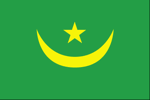Compare
San Marino
to
Mauritaniato
MauritaniaThe life expectancy at birth in Mauritania is 62.28 while in San Marino it is 83.18.
This entry contains the average number of years to be lived by a group of people born in the same year, if mortality at each age remains constant in the future. The entry includes total population as well as the male and female components. Life expectancy at birth is also a measure of overall quality of life in a country and summarizes the mortality at all ages. It can also be thought of as indicating the potential return on investment in human capital and is necessary for the calculation of various actuarial measures.
Source:
CIA World Factbook
The number of deaths of infants under one year old in a given year per 1,000 live births in Mauritania is 56.06 while in San Marino it is 4.52.
This entry gives the number of deaths of infants under one year old in a given year per 1,000 live births in the same year; included is the total death rate, and deaths by sex, male and female. This rate is often used as an indicator of the level of health in a country.
Source:
CIA World Factbook
Mauritania has an unemployment rate of 31.00% while San Marino has 8.70%
This entry contains the percent of the labor force that is without jobs.
Source:
CIA World Factbook
43 in every 100,000 people are currently imprisoned in Mauritania compared to 6 in San Marino
This entry contains the number of people in penal institutions, including pre-trial detainees. Comparability is hampered by differences in local practice, including whether psychiatrically ill offenders are under the authority of the prison administration. People held in a form of custody not under the authority of a prison administration are not included in this figure.
Source:
International Centre for Prison Studies
Per capita public and private health expenditures combined in Mauritania are $51.70 USD while San Marino spends $3,791.80 USD
This entry contains the per capita public and private health expenditure at purchase power parity using US Dollars. This figure combines government, personal, and employer spending on health care
Source:
World Health Organization
The annual number of births per 1,000 people in Mauritania is 31.83 while in San Marino it is 8.70.
This entry gives the average annual number of births during a year per 1,000 persons in the population at midyear; also known as crude birth rate. The birth rate is usually the dominant factor in determining the rate of population growth. It depends on both the level of fertility and the age structure of the population.
Source:
CIA World Factbook
 With its 3,516,806 people, Mauritania is the
132nd largest country in the world by
population. It is the 29th largest country in the
world by area with 1,030,700 square kilometers.
With its 3,516,806 people, Mauritania is the
132nd largest country in the world by
population. It is the 29th largest country in the
world by area with 1,030,700 square kilometers.
Independent from France in 1960, Mauritania annexed the southern third of the former Spanish Sahara (now Western Sahara) in 1976 but relinquished it after three years of raids by the Polisario guerrilla front seeking independence for the territory. Maaouya Ould Sid Ahmed TAYA seized power in a coup in 1984 and ruled Mauritania with a heavy hand for more than two decades. A series of presidential elections that he held were widely seen as flawed. A bloodless coup in August 2005 deposed President TAYA and ushered in a military council that oversaw a transition to democratic rule. Independent candidate Sidi Ould Cheikh ABDALLAHI was inaugurated in April 2007 as Mauritania's first freely and fairly elected president. His term ended prematurely in August 2008 when a military junta led by General Mohamed Ould Abdel AZIZ deposed him and installed a military council government. AZIZ was subsequently elected president in July 2009 and sworn in the following month. AZIZ sustained injuries from an accidental shooting by his own troops in October 2012 but has continued to maintain his authority. The country continues to experience ethnic tensions among its black population (Afro-Mauritanians) and white and black Moor (Arab-Berber) communities, and confronts a terrorism threat by al-Qa'ida in the Islamic Maghreb (AQIM).
Check out the recommended reading list below for great sources of information on Mauritania